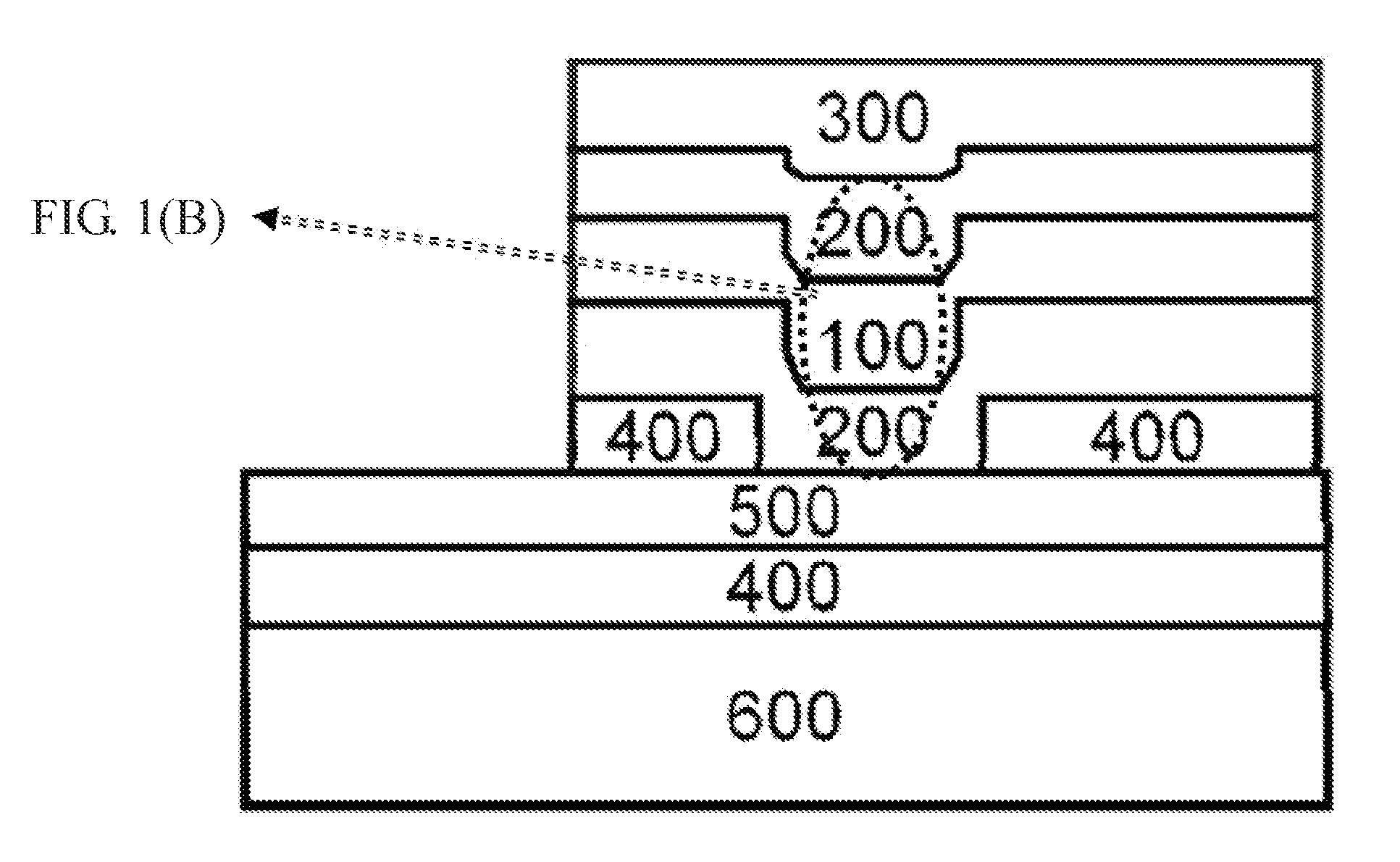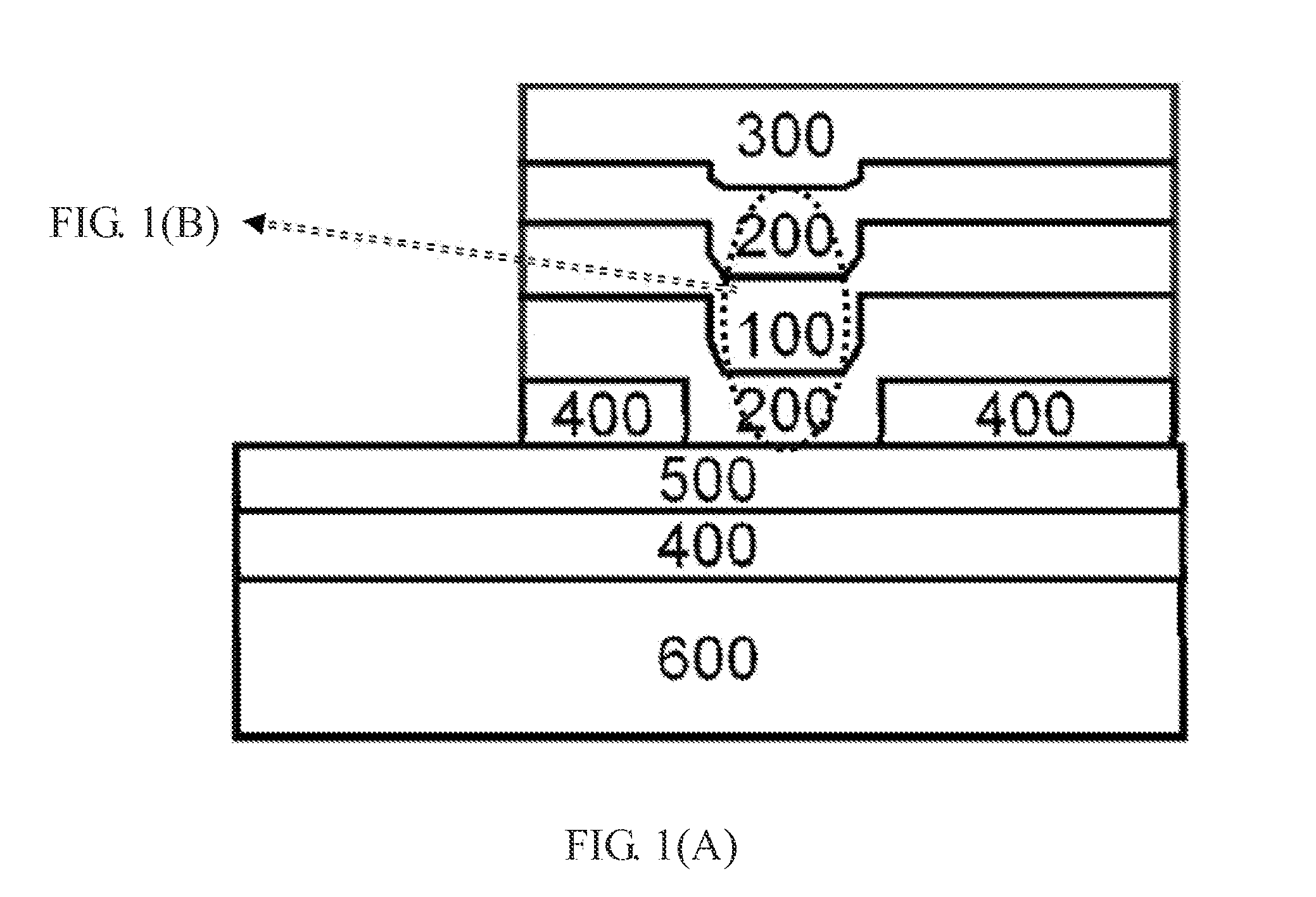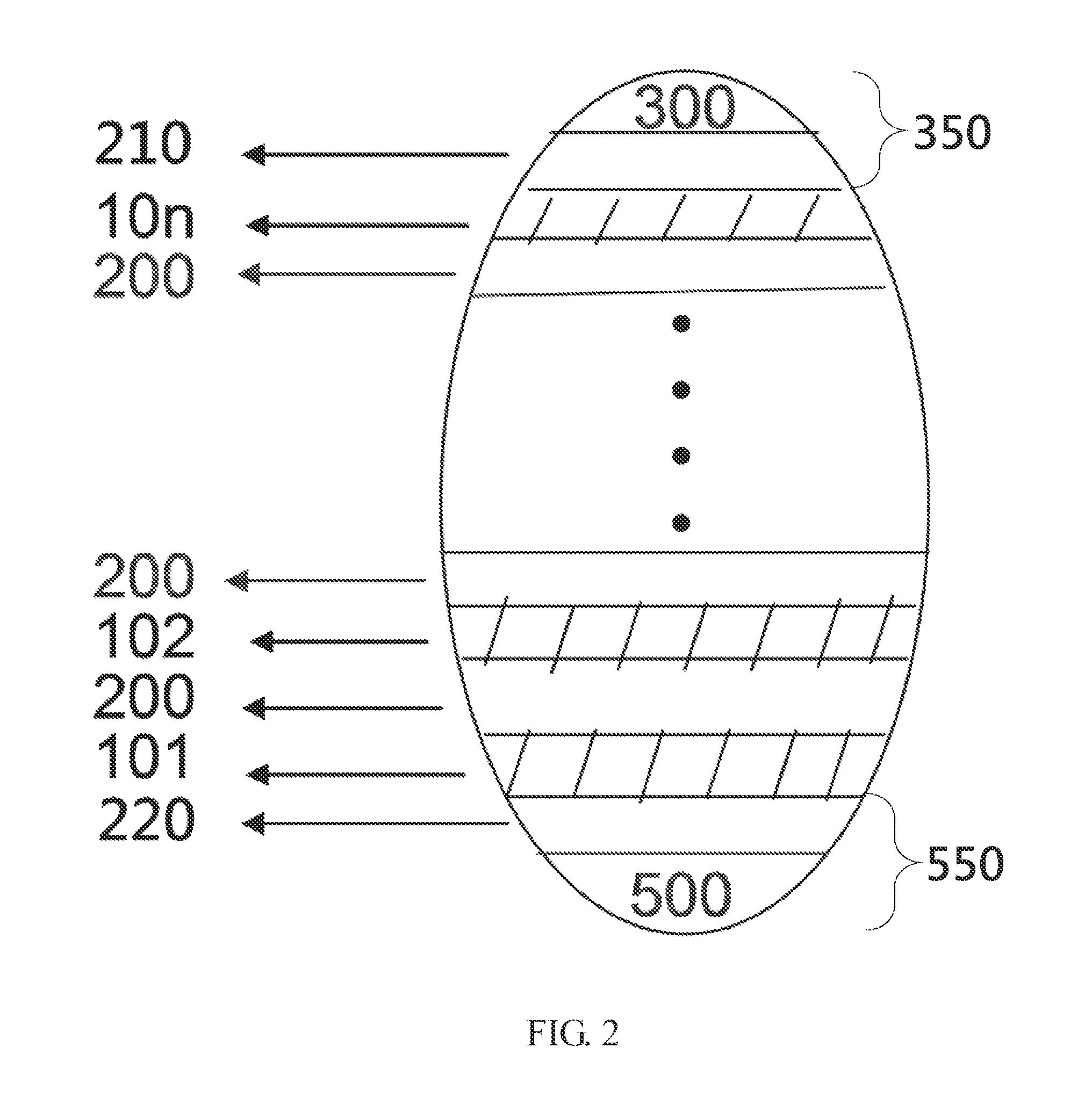Multi-Layered Phase-Change Memory Device
a memory device and phase-change technology, applied in the field of memory devices, can solve problems such as the challenge of the reliability of the pcm
- Summary
- Abstract
- Description
- Claims
- Application Information
AI Technical Summary
Benefits of technology
Problems solved by technology
Method used
Image
Examples
embodiment 1
[0127]The undoped Sb-film as the phase-change material is made into a bridge-memory-device which means that the operation current is applied to flow parallel to the plane of the Sb-film. The processing of this device is as follow: at the deposition rate of 0.33 nm / min, a Sb-film is deposited on SiO2 / Si with the thickness of 5 nm. It is inevitably contaminated with trace impurity of oxygen. The Sb-film is deposited between the first electrode 300 which is the left electrode in FIG. 10, and the second electrode which is the right electrode in the FIG. 10. A layer of silicon oxide with the thickness of 100 nm is deposited on top of the Sb-film which is then sandwiched between two barrier SiO2 layers. Focused ion beam (FIB) is used to cut the sandwiched Sb-film into bridge memory device with a length of 1000 nm and a width of 200 nm. The sectional view is observed by the transmission electron microscopy (TEM) shown as the inset in FIG. 10.
[0128]FIG. 10 also illustrates relationship betw...
embodiment 2
[0130]In this preferable embodiment, a three-layered sandwich structure made of undoped Sb film is made into a vertical memory device, which means that operation current flows vertical to the plane of the Sb-film. First, bottom electrode TiN, which acts also as the conductive barrier layer, is deposited onto SiO2 / Si substrate. After deposition of a dielectric layer SiO2, two vias with sizes of 400 nm, and 800 square nanometers, respectively, are prepared by photolithography by the back-end-of-line of a complementary-metal-oxide-semiconductor (CMOS) processing. Undoped Sb-film is deposited into the vias at the deposition rate of 0.33 nm / min until the thickness of 5 nm. Thereafter, the TaN top electrode, which also acts as another conductive barrier layer, is deposited. FIG. 11 illustrates electrical resistance (Ω)-voltage (V) during set and reset operations of the vertical memory-cell made of undoped Sb-film with 400 square nanometers. The pulse width is 100 ns. The set voltage is 2....
embodiment 3
[0132]In this preferable embodiment, 8 at % carbon doped single Sb-phase film (C8at%), at 10 nm thickness, is made into a vertical memory-cell and tested by the processes described in Embodiment 2. With Sb(C) as the memory material, the memory-layer 100 is can be connected with the electrodes on upper and lower sides. Cell structure is a three-layered sandwich-structure the same as that shown in the FIG. 1 (A). The material of the electrodes and the barrier layer is nitrides, TiN on the bottom and TaN on top. Silicon oxide formed by a low temperature process is adopted as the material of the dielectric layer 400. The deposition rate of the memory-layer 100 is 0.33 nm / min.
[0133]FIG. 13 illustrates the electrical resistance (Ω)—applied voltage (V) curve (R-V curve) of the memory cell upon set-reset is carried out using a pulse-width of 80 ns. With I-sweep mode, electrical resistance of the vertical memory cell at originally high resistance state can be switched to the low resistance s...
PUM
 Login to View More
Login to View More Abstract
Description
Claims
Application Information
 Login to View More
Login to View More - R&D
- Intellectual Property
- Life Sciences
- Materials
- Tech Scout
- Unparalleled Data Quality
- Higher Quality Content
- 60% Fewer Hallucinations
Browse by: Latest US Patents, China's latest patents, Technical Efficacy Thesaurus, Application Domain, Technology Topic, Popular Technical Reports.
© 2025 PatSnap. All rights reserved.Legal|Privacy policy|Modern Slavery Act Transparency Statement|Sitemap|About US| Contact US: help@patsnap.com



